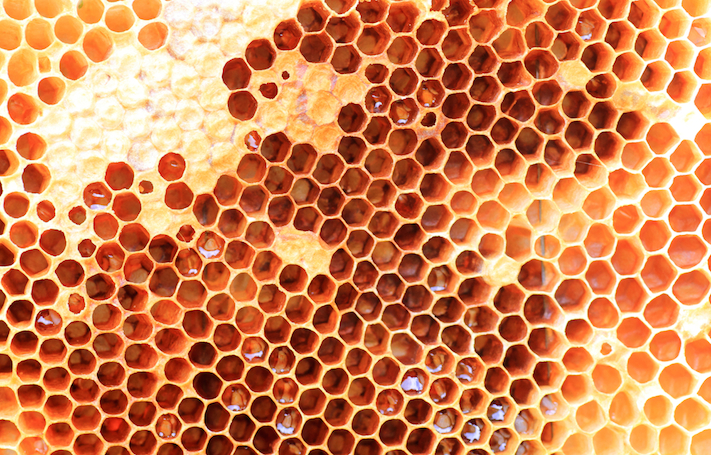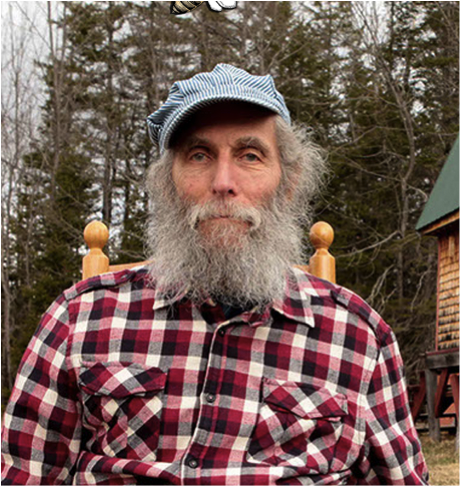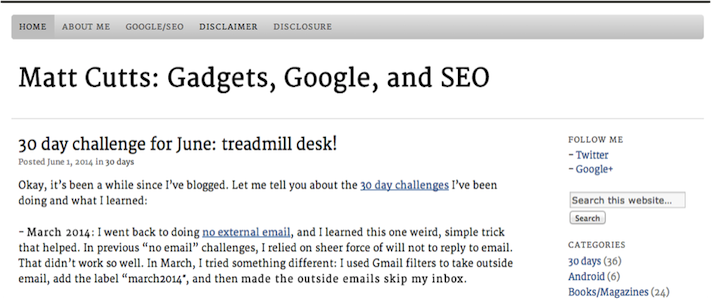
It was his first attempt at transferring bees from the USPS box to the hive in his small backyard. But despite his careful, calculated movements, he forgot one important step: to secure the hood of the beekeeper suit. As 50 bees flew up inside his hood, his thick-rimmed glasses fell off, and he ran toward the house as the swarm stung his face and head.
This story is about my boyfriend, a software developer who fancies himself a bit of an urban farmer on the side. I’m sharing this to provide a little laughter, but more importantly, to explain why this article about the founder of Burt’s Bees intrigued me.
Bees have been on my mind lately, but it was Burt Shavitz’s story that interested me because it plays on the concept of humanizing a brand through a product’s branding and packaging.
I’ve bought dozens of Burt’s Bees products over the years and never considered that the face on the packaging was an actual man — that this cartoon image is the Burt of Burt’s Bees.
I had no idea the brand was so human, and I think this is a huge missed opportunity.  Tweet this
Tweet this

Above: Burt Shavitz Photo Credit: BurtzBuzzDoc.com
I read a little bit about Burt and feel like I get him. He’s an introvert, passionate about his craft, and incredibly concerned about the plight of bees. He knows about honey and lip balm, and I’ve come to trust the quality of Burt’s Bees because I genuinely like Burt and the passion he puts into his products.
After reading the article, I can’t wait to watch the documentary about him, “Burt’s Buzz.” Burt’s Bees is now top of mind, and I look forward to the next time I see the products in the store so I can compare the logo to the photo of the real man behind the company. I now have a connection to Burt’s Bees that I will never share with ChapStick or Eos lip balm.
Keep in mind that this is after reading only one interview and watching a few video clips of the guy!
Maybe I’m just easy to win over, or maybe this is the perfect example of the concept behind thought leadership.  Tweet this
Tweet this
Thought leadership provides more than brand awareness or an ability to stay top of mind with customers; brands can do that through a lot of advertising. Thought leadership helps build a relationship where customers feel they “get” the brand so much that they want to buy from it again and again.
Some brands are doing this really well, and others have potential. The key is to choose someone to be the “front person", or in other words, the thought leader. It doesn’t have to be a founder or the CEO, but it needs to be someone who has industry expertise and who customers can relate to.
Marketing expert Chris Brogan calls these people “trust agents.” They are the people who can speak for a brand and sound like real human beings because they are. They aren’t simply the mouthpieces of the brand; they have their own experiences, opinions, and biases that they bring with them.
Some great examples of thought leaders/trust agents include:
Matt Cutts of Google

Matt is the head of Google’s webspam team, and he writes his own blog. Although much of his content is about Google, he explicitly states that the opinions he writes on his blog are his own. When Matt writes something about Google, people listen. If you pay attention to the search or publishing worlds at all, you probably read his post on guest blogging being dead, and then hopefully read our follow-up.
Obviously, Google doesn’t need help with brand awareness or becoming top of mind with consumers, but thought leaders such as Matt Cutts help Google connect on a more personal level with the marketers who follow its updates and spend money on Google AdWords.  Tweet this
Tweet this
Stephan Aarstol of Tower Paddle Boards

Stephan appeared on the hit TV show “Shark Tank,” which was the first big boost for his brand. People got to know him through the show and have continued to follow his experiences and expertise through the content he publishes in Entrepreneur, LinkedIn, and a variety of niche publications. Stephan can easily relate to other entrepreneurs, fathers, and outdoor enthusiasts when he writes on all of these topics.
His personality shines through in his content, which helps people understand the personality of the Tower Paddle Boards brand and drives loyalty and trust.
Whether you’re an executive in a large organization or the founder of a startup, humanizing your brand is essential for building brand loyalty.  Tweet this This can be accomplished through branding, written content, or social media — as long as it’s coming from a real human with an authentic personality.
Tweet this This can be accomplished through branding, written content, or social media — as long as it’s coming from a real human with an authentic personality.
My only question to the current executives of Burt’s Bees is this: Why has it taken so long for us to get to know Burt Shavitz?
And speaking of bees, in case you were concerned about the way I ended the anecdote at the beginning of the article, I’m happy to report that my boyfriend has recovered from the bee stings and now has a great relationship with his bees.(Here’s a photo of him smiling in a secured bee hood for proof.)














